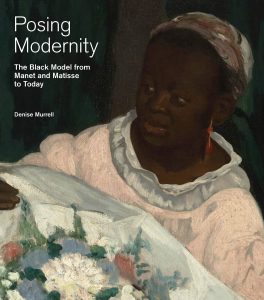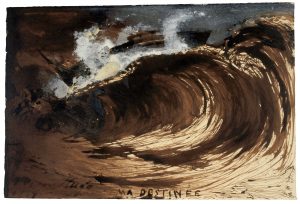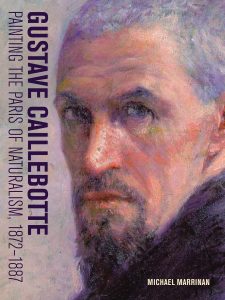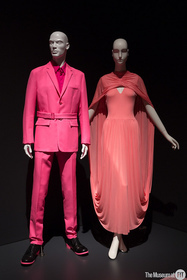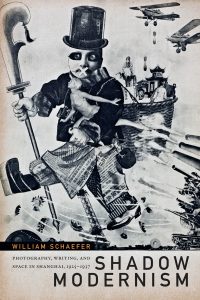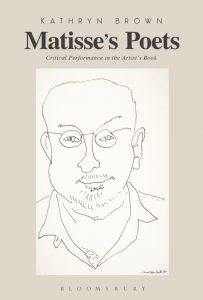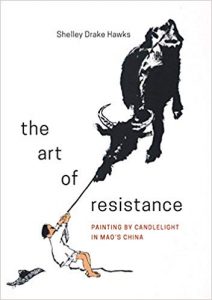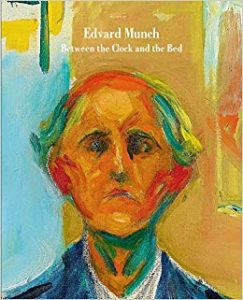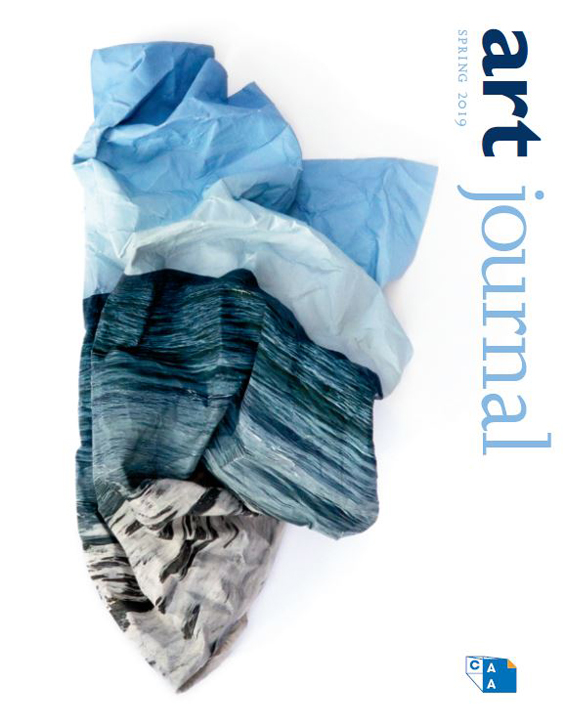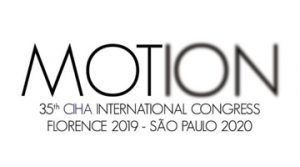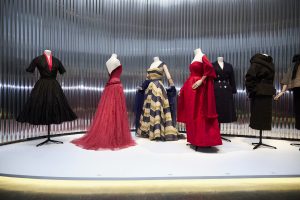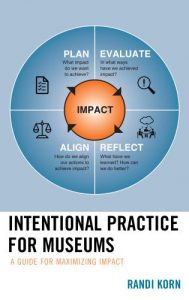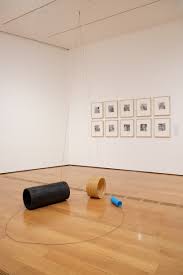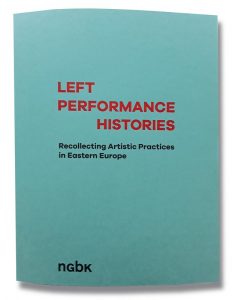CAA News Today
New in caa.reviews
posted by CAA — May 31, 2019
Michele Valerie Ronnick reviews Posing Modernity: The Black Model from Manet and Matisse to Today by Denise Murrell. Read the full review at caa.reviews.
Jason Nguyen writes about Stones to Stains: The Drawings of Victor Hugo, edited by Cynthia Burlingham and Allegra Pesenti. Read the full review at caa.reviews.
Elizabeth Benjamin explores Gustave Caillebotte: Painting the Paris of Naturalism, 1872–1887 by Michael Marrinan. Read the full review at caa.reviews.
Hazel Clark reviews Pink: The History of a Punk, Pretty, Powerful Color by Valerie Steele. Read the full review at caa.reviews.
News from the Art and Academic Worlds
posted by CAA — May 29, 2019
Want articles like these in your inbox? Sign up: collegeart.org/newsletter
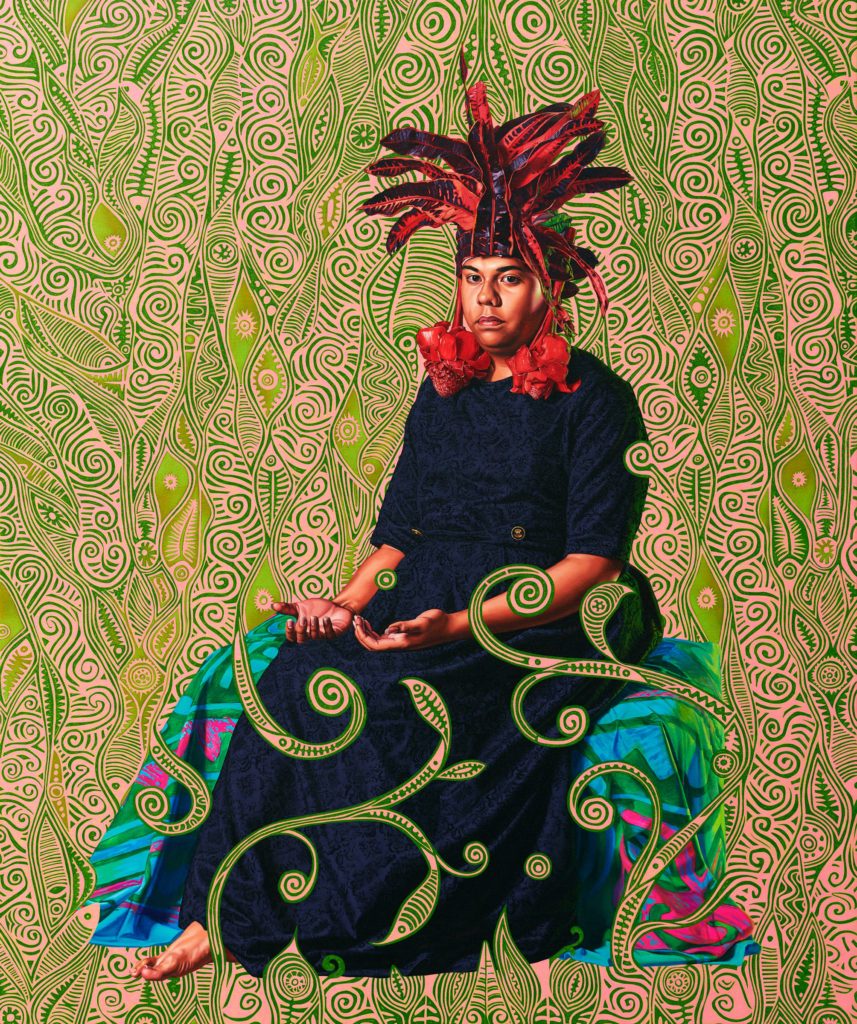
Kehinde Wiley, Portrait of Moerai Matuanui, 2019. Courtesy Templon, Paris & Brussels, © 2019 Kehinde Wiley, via artnet News
Artist Kehinde Wiley’s Latest Paintings Are a Progressive Riposte to Paul Gauguin’s Primitivist Portraits of Tahitians
“My job as a looker, as a creator, as a thinker, is to somehow imagine a newness within that bankrupt vocabulary.” (artnet News)
Last-Minute Tenure Threat
A professor’s future at the University of Mississippi was uncertain as the statewide governing board debated his social media record. (Inside Higher Ed)
Decolonizing and Diversifying Are Two Different Things: A Workshop Case Study
A helpful explainer focused on decolonial pedagogical tools, adapted from a CAA 2019 workshop. (Art History Teaching Resources)
Want to Help Struggling College Students? Support the Low-Paid Staff Who Teach Them
A case for why untenured faculty are a 2020 campaign issue. (ThinkProgress)
Craft, Queer Art, and the Canon: Sheila Pepe on Moving Through the Margins
An interview with former CAA board member Sheila Pepe on art, queerness, and craft. (Artspace)
Smarthistory’s Expanding the Renaissance Initiative
A new initiative will work towards art histories that “do not present European art as superior and help to weaken the binary western/non-western paradigm.” (Smarthistory)
New in caa.reviews
posted by CAA — May 24, 2019
Lisa Claypool reviews Shadow Modernism: Photography, Writing, and Space in Shanghai, 1925–1937 by William Schaefer. Read the full review at caa.reviews.
Katherine Shingler writes about Matisse’s Poets: Critical Performance in the Artist’s Book by Kathryn Brown. Read the full review at caa.reviews.
Yang Wang discusses The Art of Resistance: Painting by Candlelight in Mao’s China by Shelley Drake Hawks. Read the full review at caa.reviews.
Frances Blythe reviews Edvard Munch: Between the Clock and the Bed, edited by Gary Garrels, Jon-Ove Steihaug, and Sheena Wagstaff. Read the full review at caa.reviews.
CAA Assembles Working Group Against Harassment and Assault
posted by CAA — May 23, 2019
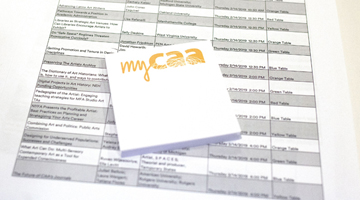 Motivated by an Idea Exchange roundtable held at the 2019 Annual Conference in New York, CAA announces the formation of a Working Group Against Harassment and Assault, aimed at addressing issues related to sexual harassment and power dynamics at the Annual Conference.
Motivated by an Idea Exchange roundtable held at the 2019 Annual Conference in New York, CAA announces the formation of a Working Group Against Harassment and Assault, aimed at addressing issues related to sexual harassment and power dynamics at the Annual Conference.
The working group is made up of CAA members from around the country, many of whom have experience effecting change at their own institutions in this arena. The working group members are:
Sonia De Laforcade, Princeton University
Claire Kovacs, Binghamton University Art Museum
Karen Leader, Florida Atlantic University
Daniel Quiles, School of the Art Institute of Chicago
Leanne Zalewski, Central Connecticut State University
The working group will meet several times over the summer of 2019 to formulate suggestions to the Board of Directors. These recommendations are intended to aid CAA in addressing the systemic and structural dynamic of power and privilege that makes space for predatory behavior at the Annual Conference.
News from the Art and Academic Worlds
posted by CAA — May 22, 2019
Want articles like these in your inbox? Sign up: collegeart.org/newsletter
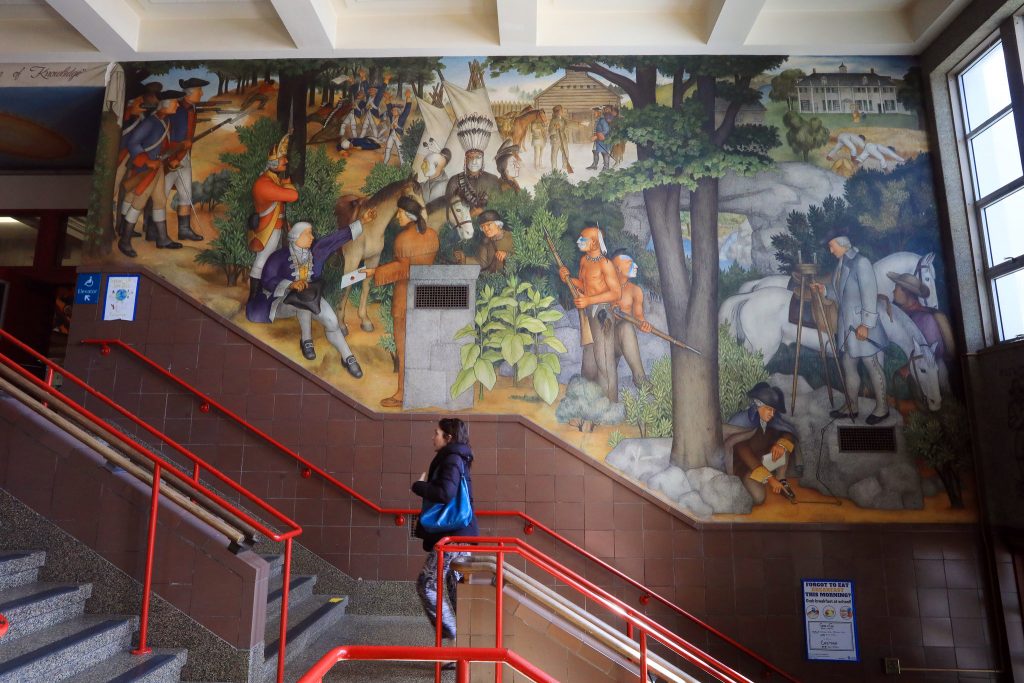
One of the 13 murals that make up “The Life of Washington” at George Washington High School in San Francisco. Photo: Jim Wilson/New York Times
These High School Murals Depict an Ugly History. Should They Go?
The San Francisco school board will make a decision about the thirteen murals that make up “The Life of Washington” this spring. (New York Times)
Western Museums Have a Surplus of Art by White Men. Now Some Are Selling It Off to Correct Their Historical Biases
The work of three North American museums may offer a blueprint. (artnet News)
CalArts Students Collaborate with Cooper Union Alumni in Their Fight Against Rising Tuition
After CalArts announced a tuition hike in March, students have been participating in a bigger conversation around the transparency and values of arts institutions. (Hyperallergic)
Money, Ethics, Art: Can Museums Police Themselves?
“In the space of barely a year, the very foundations of museums—the money that sustains them, the art that fills them, the decision makers that run them—have been called into question. And there’s no end to questioning in sight.” (New York Times)
How to Build How to Build a College Art Collection on a Budget of Fumes
A great resource from Hudson County Community College, which has grown its collection to over 1,200 artworks since 2006. (RAAMP)
Why Female Artists Have Used the Self-Portrait to Demand Their Place in Art History
Female self-portraiture has changed dramatically over time, but it continues to transgress expectations. (Artsy)
An Interview with Jordana Moore Saggese, Editor-in-Chief of Art Journal
posted by CAA — May 21, 2019

Photo by Sarah Deragon, Portraits to the People
Jordana Moore Saggese is an Associate Professor of American Art at the University of Maryland, College Park and the current Editor-in-Chief of Art Journal, CAA’s publication focused on twentieth- and twenty-first-century art history. Trained as an art historian, Saggese’s work focuses on modern and contemporary art with an emphasis on the expressions and theorizations of blackness. She was previously Associate Professor of Contemporary Art & Theory at California College of the Arts.
Joelle Te Paske, CAA Media and Content Manager, corresponded with her this month to learn about how she came to do the work she does, and her aspirations for the journal and the field beyond.
Joelle Te Paske: Thanks for taking the time for our interview, Jordana. So to begin, where are you from originally? What pathways led you to the work you’re doing now?
Jordana Moore Saggese: I am originally from Nashville, Tennessee. I attended Vanderbilt University, as a first-generation college student, for my undergraduate degree, and fell into an art history major at the very last moment. In fact, the summer before my senior year I suddenly realized that every opportunity I had to take an elective unit during my time at Vanderbilt I had chosen an art history class. The art history classes I took with my mentor Leonard Folgarait were truly inspiring. He encouraged his students (even those like me, who had very little knowledge of art history) to consider the work of artists as a response to the values and ideas of society, which in turn are determined by historical conditions. I can still remember his lecture on Dada, which was really the turning point for me. It was at that moment that I realized art was not something meant only for the elite; art could also be a form of rebellion. Although I had never been inside an art museum before my time as an undergraduate, Dr. Folgarait, and other faculty there, encouraged me and asked me to think deeply about the stakes of representation and introduced me to a range of objects across multiple continents and chronologies. With their encouragement, I decided to declare a major in art history and apply for graduate school my senior year.
This meant that I had to take the two-semester survey course as a senior, which fundamentally shifted the way I think about teaching those courses.
I can still remember my shock, sitting in a huge lecture hall, listening to someone drone on about a mostly white, male, heterosexist art history. I was wholly unprepared to memorize a seemingly endless stream of images. I finished the courses but this was not the art history that I was used to. That experience, of coming in almost backwards to the discipline, highlighted two main issues that still impact my teaching and research today.
First, how can we give students the very best introduction to the discipline—one that reflects the deep inquiry and the collaboration that was so intrinsic to my experience in the upper-division courses?
And second, whose art history are we teaching? That is, to what extent has a colonialist logic pervaded much of modern art history and what can I do—in my teaching and research—to undo that logic? I have been acutely aware of the ways in which art history has tended to exclude diverse perspectives and histories and much of my own work involves complicating those dominant narratives.
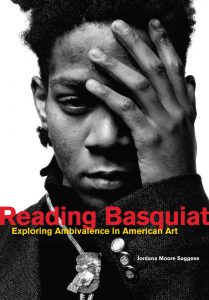
Saggese’s first book, Reading Basquiat: Exploring Ambivalence in American Art, was published by UC Press in 2014.
JTP: I love these questions as a fundamental starting point—not supplement—to the question of teaching art history. You were previously on the faculty at the California College of the Arts, and are now at University of Maryland, College Park. How has the transition been?
JMS: Teaching at an art school for the first ten years of my career was a wonderful experience in that it gave me direct and constant access to working artists. Thanks to my colleagues I was able to stay current in the field—a challenge for any historian of contemporary art—and my students constantly challenged me to make the history of art come into real time and space. CCA was also a site of experimentation, where students and faculty were willing to challenge one another, to wrestle openly with difficulty, and to fail. I have tried to bring those values to my teaching at Maryland as well. I have found the students and faculty at College Park to be deeply invested in their individual fields of interest but also in the discipline as a whole. There has also been tremendous support for my research practice, which has been a great benefit to making this transition.
JTP: As a Basquiat scholar, what is something you wish more people know about the artist?
JMS: I wish that more people considered the extent to which Basquiat’s celebrity status has threatened to eclipse his critical significance. My main project has been, and continues to be, writing this artist into the history of American art. I would also add that working on Basquiat presents extreme challenges for a researcher. There is no public archive of his work and approximately 85-90% of the paintings and drawings are in private collections (and I might mention, constantly being sold). This means that in order to see the works, one must shake a lot of hands, charm a lot of people, and knock on lots of doors. Working on Basquiat requires a thick skin, as I am often embroiled in territorial battles or even ignored. I also spend a lot of money traveling to see exhibitions so that I might glimpse the works in person. So, it’s not your typical research project!
JTP: I can only imagine the challenges that presents in pushing research forward—it’s far from a straightforward dive into the archives. What are you working on currently?
JMS: My second book, The Basquiat Reader: A Critical Anthology will be published by the University of California Press in 2020. The Basquiat Reader is a comprehensive sourcebook on Basquiat for both general audiences and advanced readers. Through a combination of interviews with the artist, criticism from the artist’s lifetime and immediately after, previously unpublished research by me, and a selection of the most important critical essays on the artist’s work, The Basquiat Reader provides a full picture of the artist’s views on art and culture, his working process, as well as the critical significance of his work both then and now. It is my hope that by giving more people access to the primary sources, we will see more scholarship on this artist.
My new book project considers representations of black male athletes as a point of entry to thinking about how black men have historically been presented to (and positioned by) the white mainstream public as a fear/fantasy. More specifically, I examine the ways in which black masculinity is constructed in the visual realm, and how the black athletic body can shape the moral, physical, and social position of African American men more broadly. Over five chapters I analyze key moments in the history of the sport, prominent black athletes and their representation in the American popular press and visual art.
JTP: That is such important work, especially as those constructions persist and accelerate in contemporary visual culture. What are your hopes for Art Journal during your tenure?
JMS: During my tenure I would like to continue to build on the global reach of the publication—in terms of both content and readership. I mean global here as something more than a keyword to signal “diversity.” I use global to signal an interconnected conversation between Europe, Asia, Africa, Latin America, South America, the Pacific—rather than a series of isolated references to an “other.” I want to think of how the perspective of modern and contemporary art from Mumbai or even Beijing connects to as well as lives separate from the touch-points of America and Europe. This is something that I began to explore in my edited forum, “Diversity and Difference,” published in Art Journal in 2016—that is, how can we think beyond the paradigm of margins and center?
I am also hoping to increase a direct engagement of artist members via the introduction of new features, such as “Object Lessons,” which will first appear in Fall 2019. This is an opportunity for artists to consider a specific object of visual culture that has directly impacted or influenced their own practice. I am also increasing the diversity of artists that we publish in Art Journal. For example, every artist project for issues published in 2019 was developed by a woman of color.
Finally, I want to highlight the role of the journal as a forum for professional conversations. Readers can expect to see short essays on fair use, censorship, and the white supremacist logic of art history—topics that typically are buried in whispers. I see Art Journal as a place where these difficult conversations and issues come to light. Many readers of Art Journal are also teachers, and I hope to bring more focus to issues of pedagogy over the coming years of my tenure as Editor-in-Chief.
JTP: It’s exciting to see the direction you are bringing to it. What are some of your other arts-related recommendations at the moment?
JMS: I have really enjoyed seeing the conversation around #POCarthistory (started by Ananda Cohen-Aponte [who recently took over CAA’s Instagram]) develop on Twitter over the last months. As someone interested in our current moment I am constantly reading Hyperallergic and I have found the resources on the website of the Association for Critical Race Art History very important to my own pedagogical development. I am currently reading The Painter’s Touch by Ewa Lajer-Burcharth.
JTP: Do you have a favorite exhibition you’ve seen recently?
JMS: This year I really enjoyed the shows by Jack Whitten (Met Breuer) and Nari Ward (New Museum), but I am still reeling from the show of new paintings by Lynette Yiadom-Boakye (Under-Song for a Cipher), which I saw at the New Museum two years ago. That show left me speechless.
The Spring 2019 issue of Art Journal is now online.
Not a CAA member? Join today and begin exploring immediately.
CIHA World Congresses in Florence and São Paolo
posted by CAA — May 20, 2019
A SESSION AT THE 2019 CAA CONFERENCE INTRODUCED TOPICS FOR The 35th World Congress, Parts 1 and 2, of the Comité International d’Histoire de l’Art (CIHA)
David Roxburgh, Prince Alwaleed Bin Talal Professor of Islamic Art History at Harvard University, contributed the following article about the next two world congresses organized by CIHA so that CAA members can consider attending and participating. Professor Roxburgh is the current president of the National Committee for the History of Art (NCHA), the US affiliate of CIHA that connects the international committee’s work with CAA and its members to sustain the global exchange of art historical work.
Motion: Transformation and the Life of Artworks, the session sponsored by NCHA at the 2019 CAA Annual Meeting in New York, brought together scholars from the organizing committees of Italy and Brazil who will share the quadrennial 35th CIHA World Congress. The themes are Motion: Transformation, taking place in Florence in 2019, and Motion: Migrations, taking place in São Paolo in 2020. The CAA panelists comprised Marzia Faietti (Gallerie degli Uffizi, Florence), Claudia Mattos Avolese (Universidade Estadual de Campinas, São Paulo), Marco Musillo (Kunsthistoriches Institut, Florence), and Christina Strunck (Friedrich-Alexander-University, Erlangen-Nürnberg), with Jesús Escobar (Northwestern University) serving as respondent and Nicola Courtright (Amherst College) as chair. The thoughtful remarks of Professor Jesús Escobar are included here for those who could not attend the panel.
The CIHA Congress in Florence will be held September 1-6, 2019, and in São Paulo September 13-19, 2020. The final program for Florence is now available.
For the São Paulo program, a call for paper submissions is available here.
NCHA recently awarded 12 travel grants to graduate students from PhD programs in the history of art from across the United States to attend the 35th CIHA Congress in Florence. A competition will be announced early in 2020 for graduate students planning to attend the CIHA Congress in São Paulo. We hope to see many art historians working in the US in Florence and São Paulo.
CAA Announces David Raizman as Interim Executive Director
posted by CAA — May 20, 2019

Photo by Michael Froio
On Sunday, May 5, the Board of Directors of CAA voted to appoint David Raizman as the Interim Executive Director of the organization. David has served as Treasurer of CAA since October 2018 and has held a number of administrative and faculty roles in higher education over a long career.
David’s term will begin July 1, 2019, at the close of the term of Hunter O’Hanian, the current Executive Director.
“I’ve been a member of CAA since 1992 and have attended and participated in CAA Annual Conferences since the early 1980s. CAA’s many programs and publications have contributed much to my development as a scholar and teacher. As a board member I’ve enjoyed seeing how CAA serves its broader membership to meet needs and challenges in academe and the arts,” said David Raizman.
“As interim Executive Director I look forward to learning more about the organization and the staff and facilitating the good work they do. I also look forward to continuing the work of Hunter O’Hanian, who created an environment of diversity and inclusion and shifted the direction of CAA toward these important ideas.”
David’s term as Interim Executive Director will span from July 1, 2019 through the appointment of a new Executive Director. The Executive Director search is currently underway, with the board of directors interviewing placement firms. The goal is to have a new executive director to lead CAA by the end of 2019.
“The Board of Directors is pleased that an experienced administrator and accomplished academic with David Raizman’s qualifications will lead CAA through this transition,” said Jim Hopfensperger, President of the CAA Board of Directors. “We have full confidence David is the right person to advance CAA’s strengths as a learned society and a professional association, while positioning the organization for long-term success under the next Executive Director.”
David Raizman biography
David Raizman is Distinguished University Professor Emeritus of Art & Art History in the Westphal College of Media Arts & Design at Drexel University in Philadelphia, Pennsylvania. He is the author of History of Modern Design (London, Laurence King and New Jersey, Pearson, 2nd edition 2010) as well as several articles and reviews on design history, including subjects ranging from American furniture to the history of world’s fairs. He earned his PhD at the University of Pittsburgh under John Williams and earlier in his career published articles and reviews on the medieval art of Spain. Prior to being appointed CAA Treasurer he was Treasurer of the International Center of Medieval Art (ICMA) and a member of its Finance Committee. During his academic career Dr. Raizman served in several administrative roles, as department head, associate dean, and interim dean in the Westphal College of Media Arts & Design, and his College’s representative to the National Association of Schools of Art & Design (NASAD).
During the summer 2015 he directed a four-week NEH-funded summer institute entitled “Teaching the History of Modern Design: The Canon and Beyond” at Drexel University. He was a guest lecturer at Tsinghua University in Beijing in 2014, and a fellow and guest lecturer at the Wolfsonian/FIU Museum in Miami Beach, Florida (2009; 2010). He is the co-editor of two books, with (current CAA board member) Carma Gorman, of Objects, Audiences, and Literature: Alternative Narratives in the History of Design
(Cambridge Scholars Publishing, 2007), and most recently, with Ethan Robey, of Expanding Nationalisms at World’s Fairs: Identity, Diversity and Exchange, 1851-1915 (Routledge, 2017). His latest book, Reading Graphic Design: Image, Text, Context is scheduled for publication with Bloomsbury in 2019.
New in caa.reviews
posted by CAA — May 17, 2019
Katie Knowles reviews the exhibition Dior: From Paris to the World. Read the full review at caa.reviews.
Deborah Ziska writes about Intentional Practice for Museums: A Guide for Maximizing Impact by Randi Korn. Read the full review at caa.reviews.
Katie Geha discusses Al Taylor: What Are You Looking At? by Michael Rooks. Read the full review at caa.reviews.
Amy Bryzgel explores Left Performance Histories: Recollecting Artistic Practices in Eastern Europe, edited by Judit Bodor, Adam Czirak, Astrid Hackel, Beata Hock, Andrej Mircev, and Angelika Richter. Read the full review at caa.reviews.
News from the Art and Academic Worlds
posted by CAA — May 15, 2019
Want articles like these in your inbox? Sign up: collegeart.org/newsletter
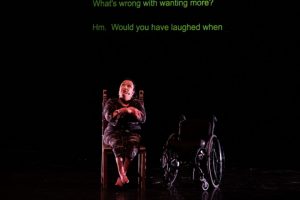
Artist NEVE performs at “I wanna be with you everywhere (IWBWYE),” a three-day festival “of, by, and for” disabled artists and writers, via Hyperallergic.
A Georgetown Student Defends the Reparations Referendum
“I have no interest in seeing Georgetown co-opt this referendum as its own contribution.” Last month, Georgetown University undergraduates voted overwhelmingly to tax themselves to create a reparations fund. (The Atlantic)
University of Texas Graduate Students Hold “Grade-In” at UT Tower
Student workers at UT Austin rallied this week to demand better pay and tuition coverage. (KXAN Austin)
Parenting and Labor in the Art World: A Call to Arms
Last month, MoMA PS1 agreed to settle curator and editor Nikki Columbus’s claim of gender, pregnancy, and caregiver discrimination. But what is the larger context of this landmark case? (Hyperallergic)
A Performance Festival by and for Disabled Artists
A look at how arts organizers can move beyond compliance with the Americans with Disabilities Act and instead embrace “access intimacy.” (Hyperallergic)
This Dealer Fought for African-American Artists for Decades—Now the Market Is Paying Attention
“When I called realtors to try and find a space on 57th Street, most of the realtors hung up. They said, ‘Well, what kind of gallery are you going to have?’ And I said, ‘I have a gallery that shows the work of black artists’—clink.” – Linda Goode Bryant (Artsy)
Three Changes Higher Ed Leaders Should Be Ready to Make
Higher education leaders met with journalists last week at the Education Writers Association’s National Seminar. Here are their top three takeaways. (Education Dive)



